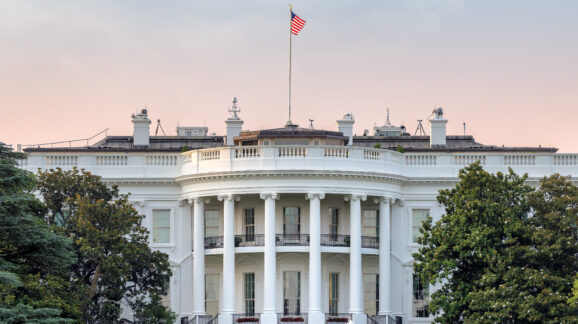There are two main areas in which Congress can enact meaningful reform. The first is to rein in regulatory guidance documents, which we refer to as “regulatory dark matter,” whereby agencies regulate through Federal Register notices, guidance documents, and other means outside standard rulemaking procedure. The second is to enact a series of reforms to increase agency transparency and accountability of all regulation and guidance. These include annual regulatory report cards for rulemaking agencies and regulatory cost estimates from the Office of Management and Budget for more than just a small subset of rules.
In 2019, President Trump signed two executive orders aimed at stopping the practice of agencies using guidance documents to effectively implement policy without going through the legally required notice and comment process.
Featured Posts

Blog
The year the red tape died? Trump’s 2025 rule count hits historic lows
At the halfway point of 2025, the federal regulatory machinery is running at an unprecedented crawl. That’s good news. As tracked annually in my…

Blog
Trump executive order establishing a portal for regulatory dark matter
Even at the insistence of Congress in 2018, 46 federal agencies could only uncover only about 13,000 of their guidance documents and policy statements…

Blog
The week in regulations: Nuclear fees and unintentional otter injuries
The possible war with Iran did not escalate. The reconciliation bill debate continued, as did presidential pressure on the Federal Reserve to lower rates. U.S.
Search Posts
Products
Chapter 5: Regulatory dark matter: Executive orders and memoranda
Although executive actions ostensibly deal with the internal operations of the federal government, they increasingly can have binding effect and influence private behavior. Executive orders,…
Products
Chapter 6: More than 22,000 agency public notices annually
Along with the few dozen presidential memoranda and other proclamations are the thousands that issue from departments and agencies. Through various species of guidance documents,…
Products
Chapter 13: Needed: An agenda for rightsizing Washington
Rule counts regularly topped 4,000 in the 1990s. That is the wrong comparison for Biden’s lower rule counts. His fewer rules have higher costs, are…
Products
Chapter 4: The expanding Code of Federal Regulations
The page count in the Code of Federal Regulations (CFR)—where the Federal Register’s rules come to rest in small print in bound volumes of magenta,…
Products
Chapter 7: A note on rule reviews at OMB’s Office of Information and Regulatory Affairs
Yesterday’s rule review, where the review authority sought to restrain government intervention and minimize costs, is different from today’s rule review. Now the would-be overseer…
Products
Chapter 12: The 2024 Unconstitutionality Index: 44 rules for every law
Article I of the Constitution notwithstanding, administrative agencies rather than Congress do most of the lawmaking in the United States. Congress enacts weighty legislation but…
Staff & Scholars

Clyde Wayne Crews
Fred L. Smith Fellow in Regulatory Studies
- Business and Government
- Consumer Freedom
- Deregulation

Ryan Young
Senior Economist
- Antitrust
- Business and Government
- Regulatory Reform

Fred L. Smith, Jr.
Founder; Chairman Emeritus
- Automobiles and Roads
- Aviation
- Business and Government

Sam Kazman
Counsel Emeritus
- Antitrust
- Automobiles and Roads
- Banking and Finance

Marlo Lewis, Jr.
Senior Fellow
- Climate
- Energy
- Energy and Environment